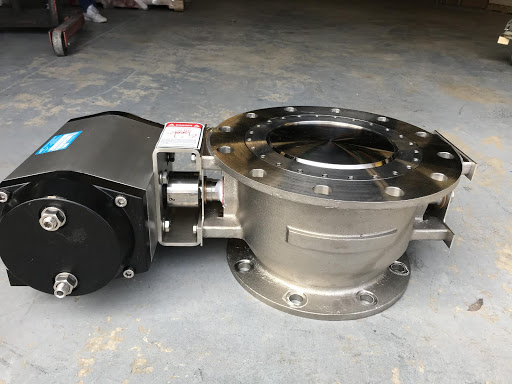
You’ve seen this problem before. As your dry solids move from one area of your production line to another, your transitions valve develops plugs over time that hinder the flow. Eventually, it shuts down your line for several minutes while your staff cleans the valve.
Crusting, caking, and clumping can come from many sources. Yet there aren’t easy ways to solve the problem. Until now.
Find out how our crust break flat-top dome solves these types of problems.
Related Post: Roto-Disc, Inc. Introduces Crust-Breaker Dome Option
Traditional Methods to Prevent Powder Caking in Bulk Solids
You’ve already explored several methods to prevent caking in bulk solids.
- Use a product that’s less fine.
- Reduce moisture content.
- Remove the ingredient that is the major caking contributor.
- Avoid the temperatures or humidity that causes caking.
- Reduce the consolidation load.
- Add a flow agent.
All of these traditional methods can add costs, research time, and even price to your end product. Instead of changing your products, which can alter the quality, you can add a mechanical crust break dome to your valve assembly.
1. Reducing Moisture
Reducing the moisture of your solids is the number one way to prevent caking and crusting. That usually means reducing the storage time of your ingredients. Otherwise, your teams will have to break up the solids before you even move them down the line.
Even if you do this, the temperature or pressure of your conveying system might cause caking. Rather than reduce moisture, your teams can use a valve specifically designed to eliminate caking, crusting, and clumping in the middle of your process.
2. Powder Testing
Powder testing allows you to measure flowability while simulating process conditions. Powder testing takes time, effort, and precision. But instead of testing powders every time you need to change these types of ingredients, remove the need for this step altogether with a mechanical solution.
3. Changing the Composition of Your Product
Once you add or take away an ingredient or change the storage conditions for your raw materials, you have to perform testing, more testing, and testing again until you get it right. You might have the best experts in your industry who know how changing something in your materials should work. But you never really know until you produce a test batch. Once your test batch works, it’s time to test under real-world conditions along your line. Then you have confidence it will work, but you still might see caking.
Changing the composition of a product takes even more time and effort than powder testing. And it can alter the quality of your end product, which can cause difficulties with your vendors and customers on both sides of the supply chain.
Related Post: How Your Company Saves Money With Custom-Made Valves for Your Machinery
Prevent Clumping, Caking & Crusting Mechanically
Roto-Disc, Inc., is a world leader in solids handling valves for dry material handling processes. Our crust breaker dome can be retrofitted to existing Roto-Disc valves, alleviating crusting, caking, and clumping for dry solids.
Contact Roto-Disc today to learn more about how we can help your company improve its processes and achieve optimal results for crust breaking.


